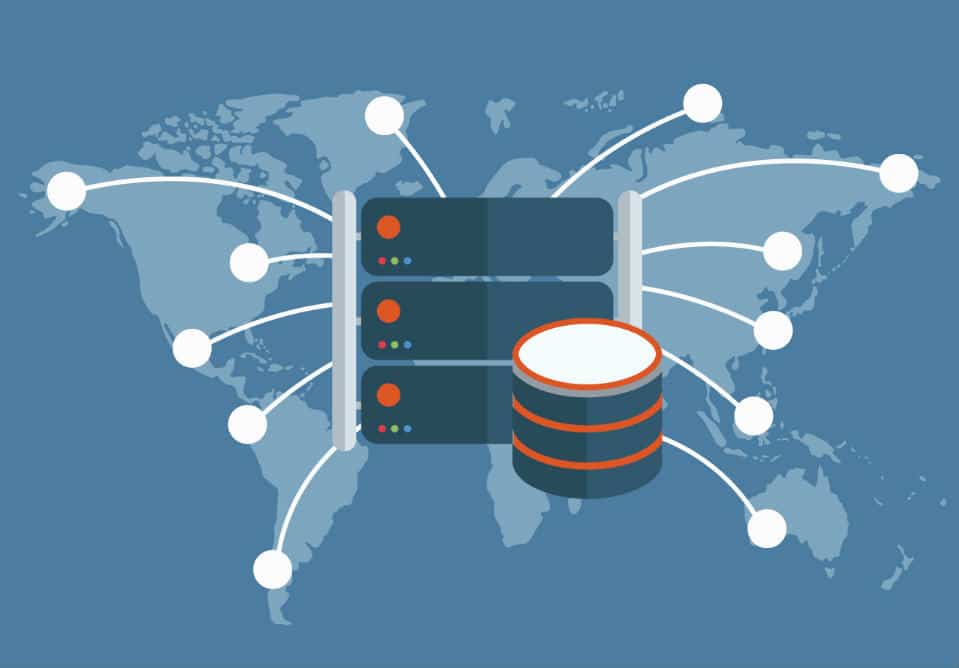The bandwidth is what makes quick file transfer and video conferencing possible. While all the different types of internet connections have their pluses and minuses, the connection speed is unrelated to bandwidth.
The speed of your connection determines how fast you can upload files. Bandwidth, on the other hand, is measured in Mbps and shows how much data internet users can exchange. It is more related to connection quality.
Website bandwidth depends on the size of the webpage, how many visitors your website gets, and how many pages they visit.
Websites with 20k visitors need 5GB per month

The average page size is 50KB. Let’s say you have around 20,000 monthly visitors. Each of them visits five pages on average. Your website would need about 5GB of bandwidth monthly. This number of visitors comes to more than 650 per day, which is difficult to achieve even for a big site.
You probably won’t need lots of bandwidth or a huge amount of space if you are just launching your website. An exception is if you expect a lot of visitors or your site offers music and film downloads. Make sure you go with a web hosting provider that will make it possible for you to upgrade your bandwidth and disk space if you need this in the future.
Types of bandwidth connections
Your website’s needs determine the bandwidth, which should ideally be adjusted as required. Bandwidth connections that provide an equal upload and download speed are called symmetrical. However, most online users have asymmetrical connections, where downloading is faster than uploading. You should be able to adjust your site’s bandwidth as an owner to give upload speed priority if you wish.
Factors affecting bandwidth

Drops in bandwidth can make your site inaccessible. What’s more, factors like security can have a negative impact on your bandwidth connection. You need to keep your website security updated. The biggest threat to bandwidth capacities is a distributed Denial-of-Service (DDoS) attack. This is where a huge volume of bots generates malicious traffic, sending an overwhelming number of requests to your provider’s servers. Regular users won’t be able to access your website as a result.
As the number of visitors to your site grows, your bandwidth needs will increase as well. It might be a good idea to run bandwidth speed tests at different times to establish how much traffic there will be to your site moving forward.
You might have to install plugins in the future, which consume more bandwidth. Consider whether your current hosting provider makes upgrades possible. Typically, bandwidth is directly proportional to the internet connection speed.
Some apps consume more bandwidth than others
Some processes and apps consume more bandwidth, as you’ve probably noticed. These include internet telephony and video calls, and certain background tasks. Here are some more details.
Websites that provide video conferencing and VOIP services would do well to migrate these apps to a different server so they don’t impact the overall bandwidth. In addition, background tasks like database backups and security updates can deplete bandwidth quickly. For optimal quality, you should limit the number of background tasks on your site.
Improving bandwidth
Poor-quality can lead search engines to punish your site. As a preventive measure, ask your hosting provider to increase it. Then, make sure your site’s settings and apps aren’t consuming too much of it. Optimize them as well as your website’s design. Heavy and complicated design features can slow down the site’s page loading speed.
How to calculate disk space
Disk space is how much data can be stored on the web server. Your website’s size determines the amount of space needed. The majority of websites consist of text, flash, images, or all three. Text (HTML) occupies a very small amount of space. Flash and images take up more. In the best case, you should keep your site under 60KB, which includes flash and images. It’s possible to put around 20 pages on 1MB with an average page size of 50KB. You can put 200 pages on 100MB of disk space.
Potential Drawbacks of Increasing Website Bandwidth
One of the main potential drawbacks of increasing it is that it may require a more powerful server to support. Higher one will result in faster page loading speeds for your visitors, but hosting companies charge based on the amount of data transfer, so boosting it could mean increasing the amount you pay for hosting. In some cases, it’s simply not worth it to increase it. Before you commit to an upgrade, make sure that you understand which elements are responsible for large data transfers so that you can eliminate them if possible and reduce your expenses.
In addition, as traffic to your site increases, so too will this usage. You’ll need to monitor activity over a period of time in order to estimate how much it should be purchased in advance of hosting a large event or promotion. Neglecting this step could cause prolonged downtimes and increased costs as you extend your plan periodically in order to address surging demand. Thus, predicting and budgeting for the appropriate amount of it is key for ensuring optimal availability and performance without spending too much money on unnecessary outages and upgrades.
Conclusion

The right amount of it for you depends on the size and complexity of your website, the type of visitors you are expecting to receive, and how often the content on your pages changes. When setting up a new website, it can be difficult to know exactly how much bandwidth is needed to keep it running without interruption. Fortunately, most hosting providers offer packages that provide an appropriate amount of bandwidth as well as added features that help keep sites running smoothly.
By carefully assessing the factors affecting your website, such as its size and content demands, you can determine which package is best suited for your needs. Additionally, using web analytics tools can help you track usage statistics so that you can make informed decisions when deciding whether or not to upgrade to a larger package if needed. With the right amount of bandwidth in place and regular monitoring via web analytics tools, there is no reason why your site cannot function properly and successfully meet all its requirements.










